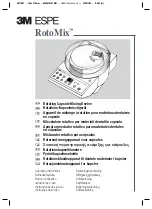
5
The Hipbelt Trim Straps
Hipbelt Trim Straps
These straps connect the hipbelt to the bottom corners of the back panel
and frame system. By tensioning the hipbelt
trim straps, you pull the bottom corners of the
framing and pack toward you, which helps
stabilize the pack.
Tensioning the hipbelt trim straps and
shoulder-pad lift straps on ArcLight™
packs also puts tension on the fiberglass
stays, bending them into an arc. These stays
actively counterbalance the weight of your
load, pulling the load forward over your
shoulders and wrapping it further around
your hips. With the tensioned flexible stays
carrying most of the weight, the central aluminum stay can retain its original,
body-hugging shape, so the load stays close to your back, no matter how much
weight you’re carrying. The closer the load rides to your back, the more upright
you can walk and the more comfortable you’ll be. Tightening the hipbelt trim
straps also hangs some of the pack’s weight from the
sides
of the hipbelt.
Putting firm tension on the hipbelt trim straps is crucial to obtain the best
possible performance from your ArcLight™ pack. If you want a softer-flexing
frame while carrying lighter loads, reduce the tension on the hipbelt trim straps.
Shoulder-Pad Lift Straps
These straps connect the top of the shoulder pads to the top of the back
panel. When tightened, they relieve the pressure of the shoulder pads on your
shoulders and help shift the weight down to your hips, where it belongs. They
also help stabilize the upper part of the pack. Moderate tension on the shoulder-
pad lift straps is sufficient for them to do their job. If you tighten them too
much, you’ll lift the shoulder pads completely off your shoulders and put exces-
sive pressure on the front of your chest. The sliding buckle where the shoulder-
pad lift strap exits the shoulder pad should be at the top of your shoulder.
Sternum Strap
This strap connects the two shoulder pads and should be attached roughly
1
1
⁄
2
inches to 2 inches below the two protruding of your collarbone adjacent to
the top of the breastbone. It helps secure the shoulder pads in a comfortable
position as they cross your shoulders and chest. Position the sternum strap
initially so it crosses the middle of your upper chest (approximately 1
1
⁄
2
to 2
1
⁄
2
inches below your collarbone). Altering the sternum strap’s position and
tension periodically during the day helps prevent muscle fatigue and pressure
points. Check out
Adjusting Your Pack on the Trail
, page 10, for an additional tip.






































